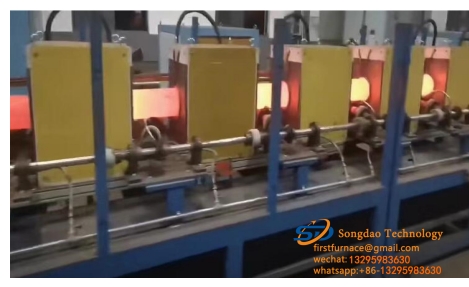- 31
- Jan
How to quench the surface of the axle
How to quench the surface of the axle
Selection of Axle Surface Strengthening Process For most axle parts, surface quenching after medium frequency induction heating is usually used to improve their service life. The motor axle and the locomotive axle are a kind of mandrel that transmits power and supports, while the vehicle axle is a kind of mandrel that does not transmit power but only supports, and mainly bears bending or bending fatigue loads.
Statistics show that most types of shafts fail due to fatigue fracture and fretting wear. In order to avoid brittle fracture and meet the requirements of the strength and toughness of the axle, the axle is often quenched and tempered or normalized. However, due to the poor performance of fatigue and fretting wear, the service life is not reached.
Practice has shown that, on the basis of quenching and tempering or normalizing, the surface axle induction quenching and tempering quenching treatment can be applied to extend the service life exponentially. Therefore, this is an important process method to improve the service life of the axle.
The surface strengthening of the axle generally mainly adopts the medium frequency induction quenching and quenching heating process, and it is completely suitable for the heating depth of the axle surface. , Surface induction hardening is very effective for improving the bending or torsional fatigue strength of the axle, reducing the sensitivity to notch and stress concentration. After the induction hardening of the axle induction quenching and tempering furnace, due to the high effective toughness and plasticity of the core, the hardened layer is allowed to have higher hardness to maintain high wear resistance, strength and residual compressive stress, and give full play to the fatigue resistance of the material. potential.

